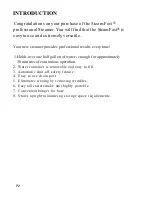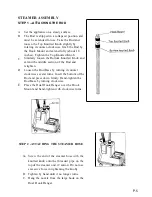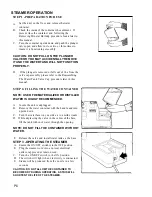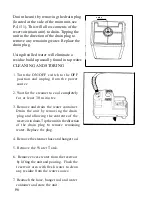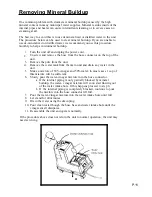
PRESSING WITH STEAM
1 .
G r a s p t h e c o n t r o l h a n d l e w i t h t h e
n o z z l e facing upward. Beginning at
the bottom
of the fabric will allow the
s t e a m t o r i s e i n s i d e a n d o u t s i d e
removing wrinkles. Slowly move the
nozzle f r o m the bottom t o the t o p of
the fabric.
2.
Remove the nozzle from the garment
and smooth the fabric with your free
hand.
NOTE:
a. Pressing
will
be easier
if
there are fewer
c r e a s e s in the o b j e c t t o b e s t e a m e d .
b. Shaking out the article prior
to
steaming
will avoid excess creasing.
c. For towels, handkerchiefs and napkins
p e g d r a p e them o v e r a r o d o r s t e a m
press them i n place over towel racks.
d.
Heavier fabrics may require repeated
s t e a m i n g . Repeat steps 1
A N D
2 as
necessary.
With practice you will gain s p e e d and
efficiency. You will soon learn which
f a b r i c s w i l l r e q u i r e m u l t i p l e s t e a m
applications.
IMPORTANCE NOTICE
Remove and drain the water container
by depressing
the valve at the bottom
of the container. (See drawing)
P.
7



